
Széchenyi Chain Bridge and others – 8 beautiful and famous bridges of Budapest
The bridges of Budapest are inseparable from the Hungarian capital. Join us down memory lane and find out their unique histories on JustBudapest.
O
C
One of the first things tourists get to know about Budapest is that the Hungarian capital is made up of Buda and Pest (and Óbuda as the lesser-known third sibling) with the heavy waters of the Danube river running between them. Since the opening of the first stone bridge in Budapest in the mid-19th century, the stories and fates of bridges got tangled with that of the city. After the successful construction of the first 5 crossings, the turmoil of World War II left them all in ruins. Today, altogether 8 vehicular and 2 railway bridges cross over the Danube in Budapest.
Let’s follow them along and learn about the stories of the beautiful eight bridges over the centuries.
1. Széchenyi Chain Bridge – the pearl of the Danube
Grand and stunning, the Chain Bridge (or as the locals call it, Lánchíd) is undoubtedly the most famous of Budapest’s bridges. Guarded by two majestic lions, it was the first permanent stone bridge connecting Buda and Pest. The Chain Bridge Budapest was inaugurated in 1849 (the bridge was designed by William Tierney Clark, the famous English engineer and also Scottish engineer Adam Clark) in a mournful time of the Hungarian history, ten years after its construction got started upon a proposition by Count István Széchenyi, one of the prominent figures of the 18th century Hungary.
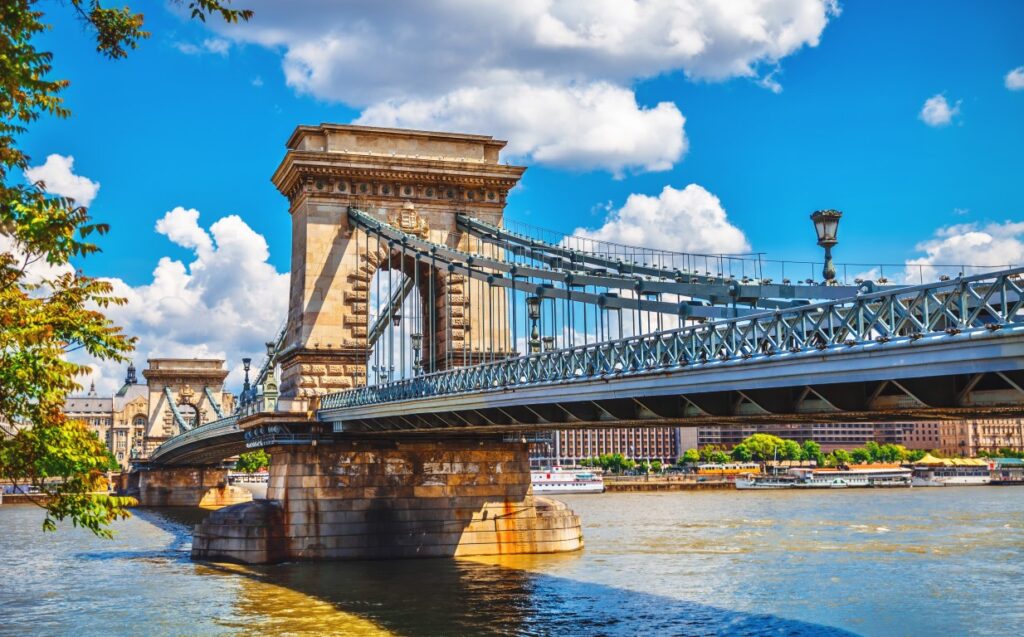
Built in classical style, the bridge got its name from the iron chains on which the road-bed hangs. Lit by night, they look just like majestic pearls on the neck of the river, no wonder it became one of the most stunning symbols of Budapest. After its tragic destruction during World War II, it was rebuilt in a slightly wider form and opened exactly on the 100th year anniversary of its original construction.
Fun fact
Rumor has it the bridge-guarding lions lack their tongues. The truth, however, is that the lions do have their tongues, but they are only visible from above.
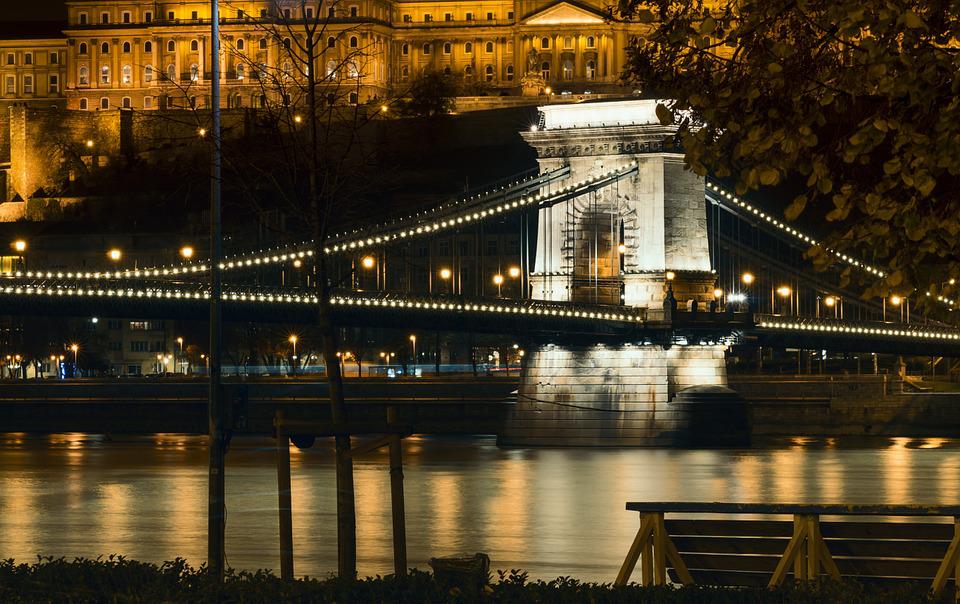
Our detailed Article about the Chain Bridge.
2. Margaret Bridge
The construction of the second permanent stone bridge of Budapest went much faster. Built in just 4 years, Margaret Bridge opened in 1876 – with the extension to Margaret Island in 1900, making it finally accessible on foot. The neo-baroque Margaret Bridge is the only bridge of the city that exploded twice during World War II. The first happened by accident during rush hours, while the second one was a planned action. On the bright side, Margaret Bridge was the second to be rebuilt just 3 years after its destruction.
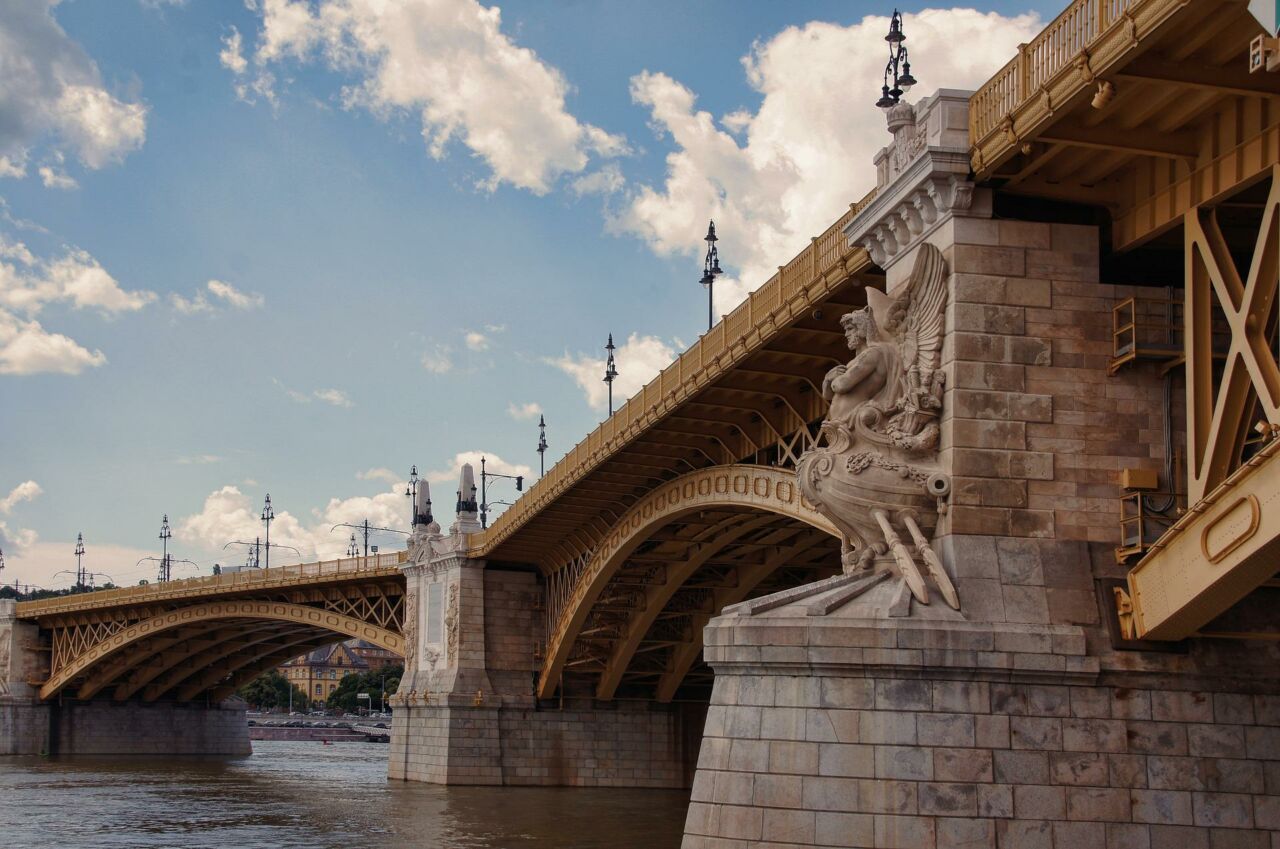
Fun fact
From the middle of the Margaret Bridge, you can get a picture-perfect panorama of Budapest. And on those super rare occasions when the water level of Danube is extremely low, a little path opens from the Northern tip of the Margaret Island to the middle pillar of the bridge, giving viewers a whole new perspective of the city.
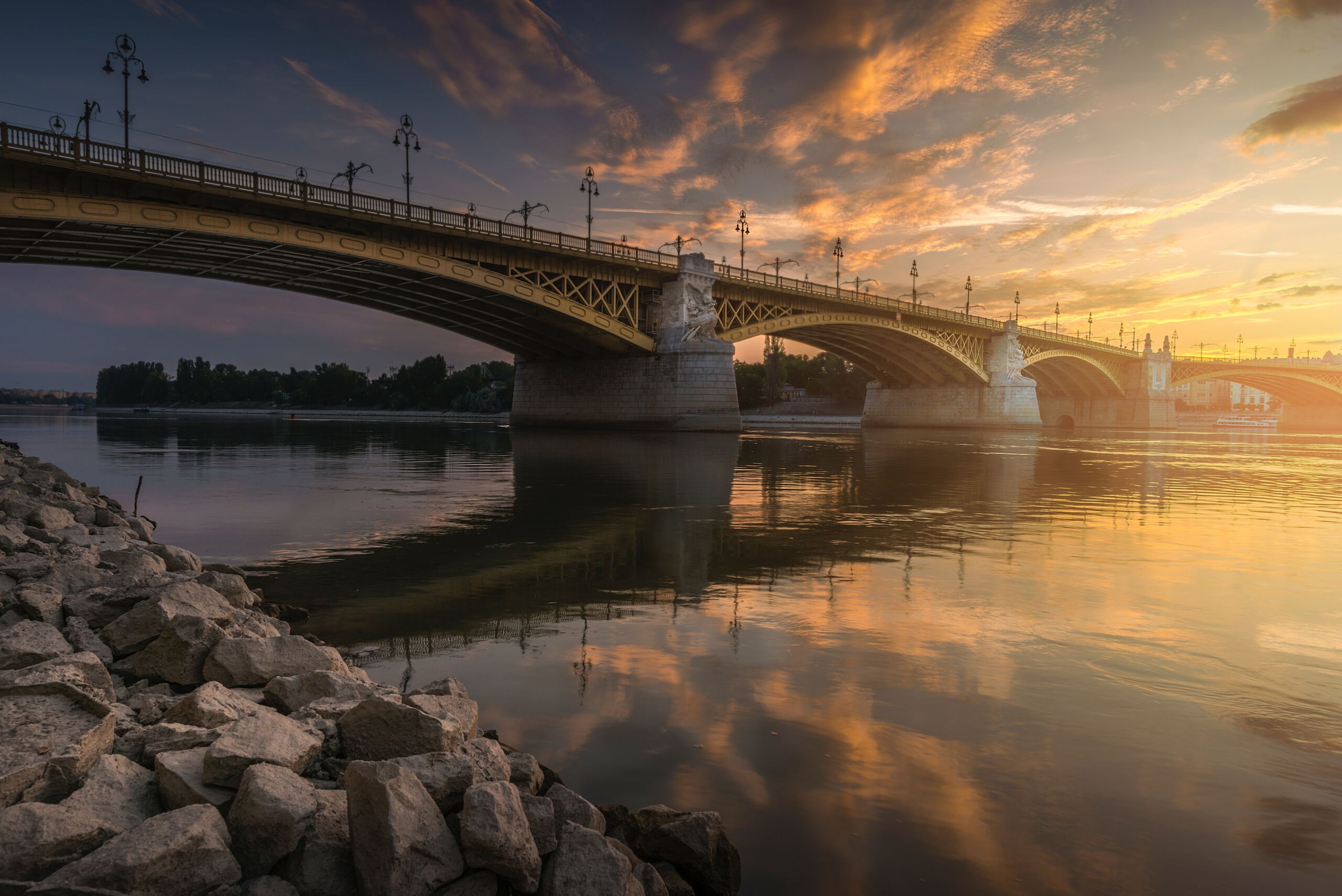
3. Liberty Bridge
Connecting two of the iconic sights of the city, the Great Market Hall and the Gellért hill, Liberty Bridge is Budapest’s shortest bridge. Finished by the 1000th birthday of Hungary in 1896, this stunningly colored structure was first named after the Austro-Hungarian Emperor Franz Joseph. But just like all the other bridges of Budapest, World War II meant the end for Franz Joseph Bridge as well. Luckily, only the name got lost, and the bridge itself remained. As the structure was only partially destroyed, reconstruction went quickly and the bridge was renamed to Liberty Bridge.
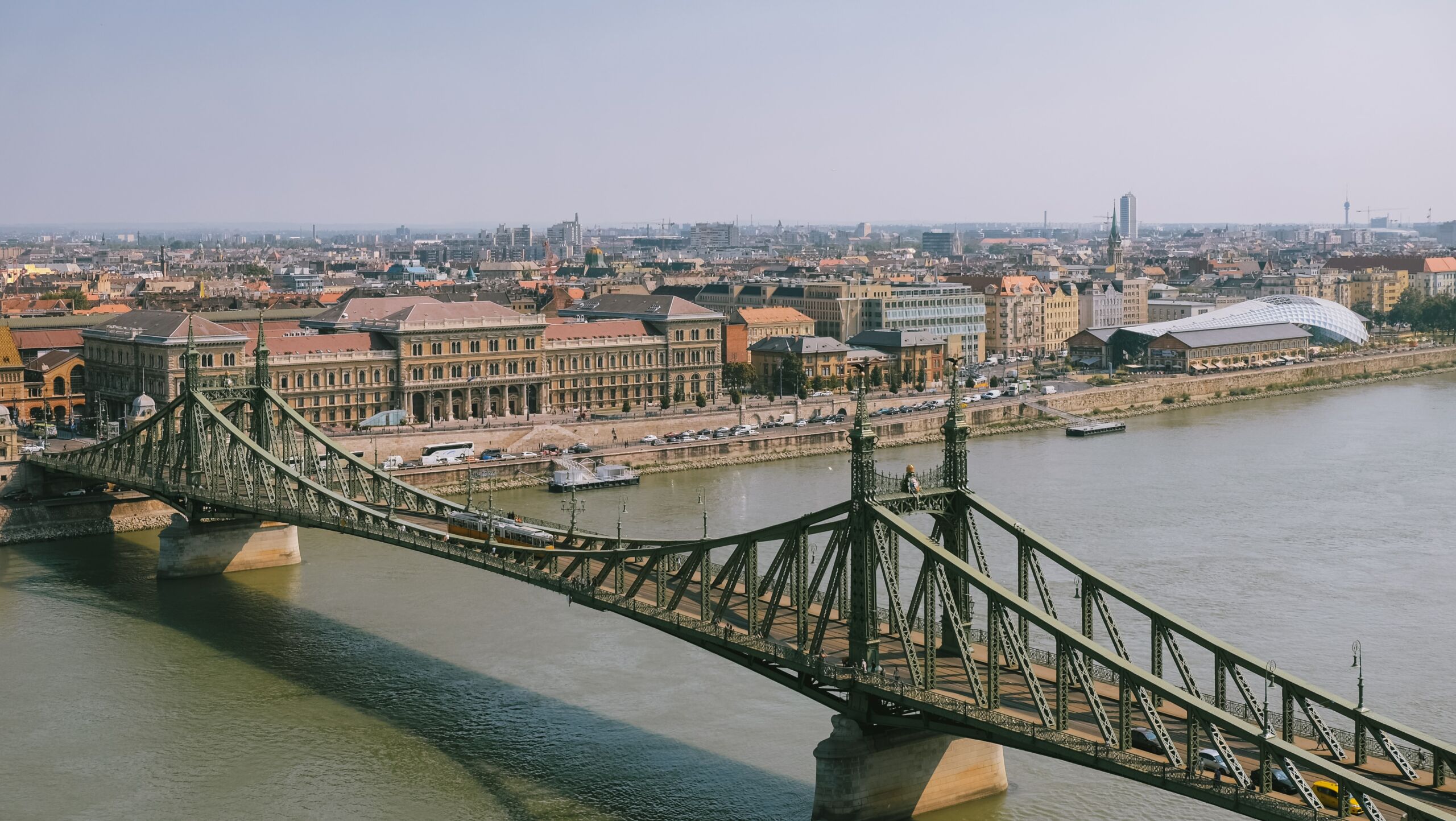
Fun fact
Everyone’s beloved green bridge got a new wave of fame in 2016 after it turned into a car-free hangout spot due to a road reconstruction on the Buda side. The impromptu gatherings led to yearly summertime gigs (called Szabihíd) with picnics, performances, music sessions, yoga classes, and more. Due to COVID-19, the summer of 2020 went by without any Szabihíd weekends, but look out for the dates next year.
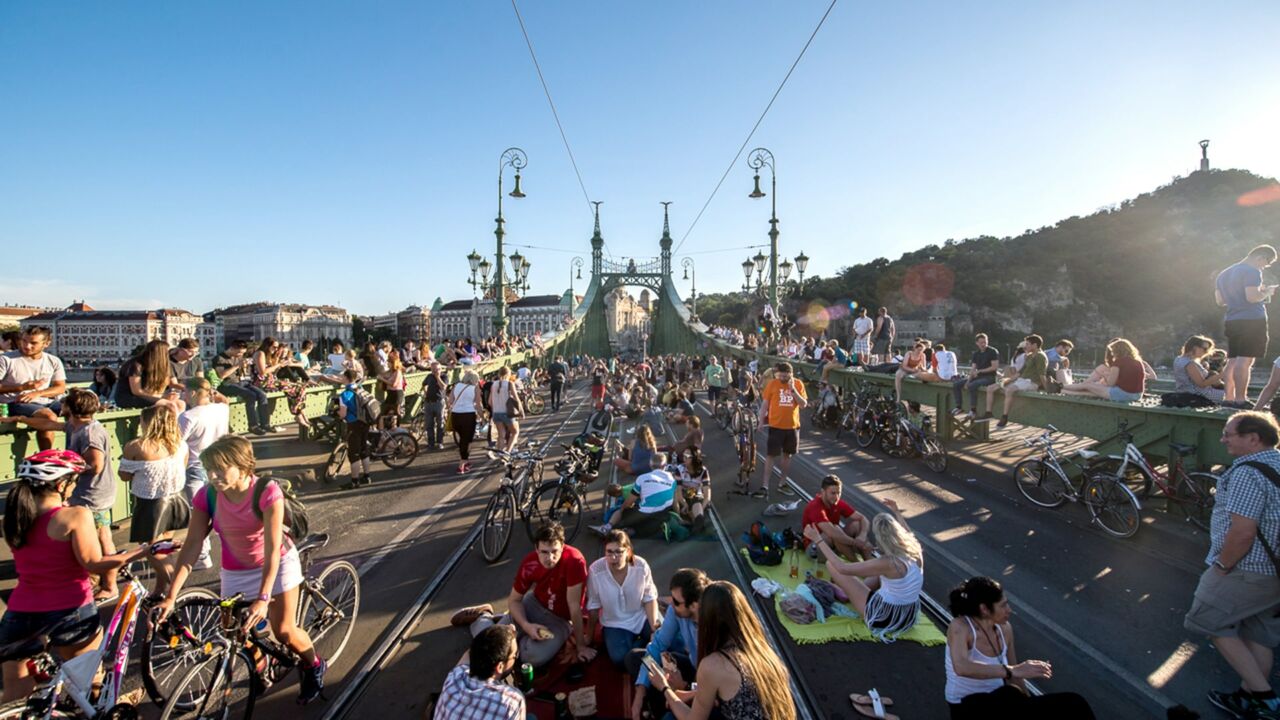
4. Elisabeth Bridge – the beautiful link between Buda and Pest
Fair and elegant, Elizabeth Bridge was built to be the pair of Liberty Bridge and named after Empress Elizabeth of Austria, the wife of Emperor Franz Joseph. Contrary to its neighboring crossing, the Elizabeth Bridge kept its name but not its original structure. Originally built as a suspension bridge, it first opened in 1903, but after the destruction of World War II, it came back to life in a new style: as a cable bridge. Its reconstruction, however, was not as quick as that of Liberty Bridge. In the midst of heated debates on how to renovate this bridge, the damaged Pest side pillar stood as a sad reminder of the war for nearly 15 years. The newly built Elisabeth Bridge reopened only in 1964.
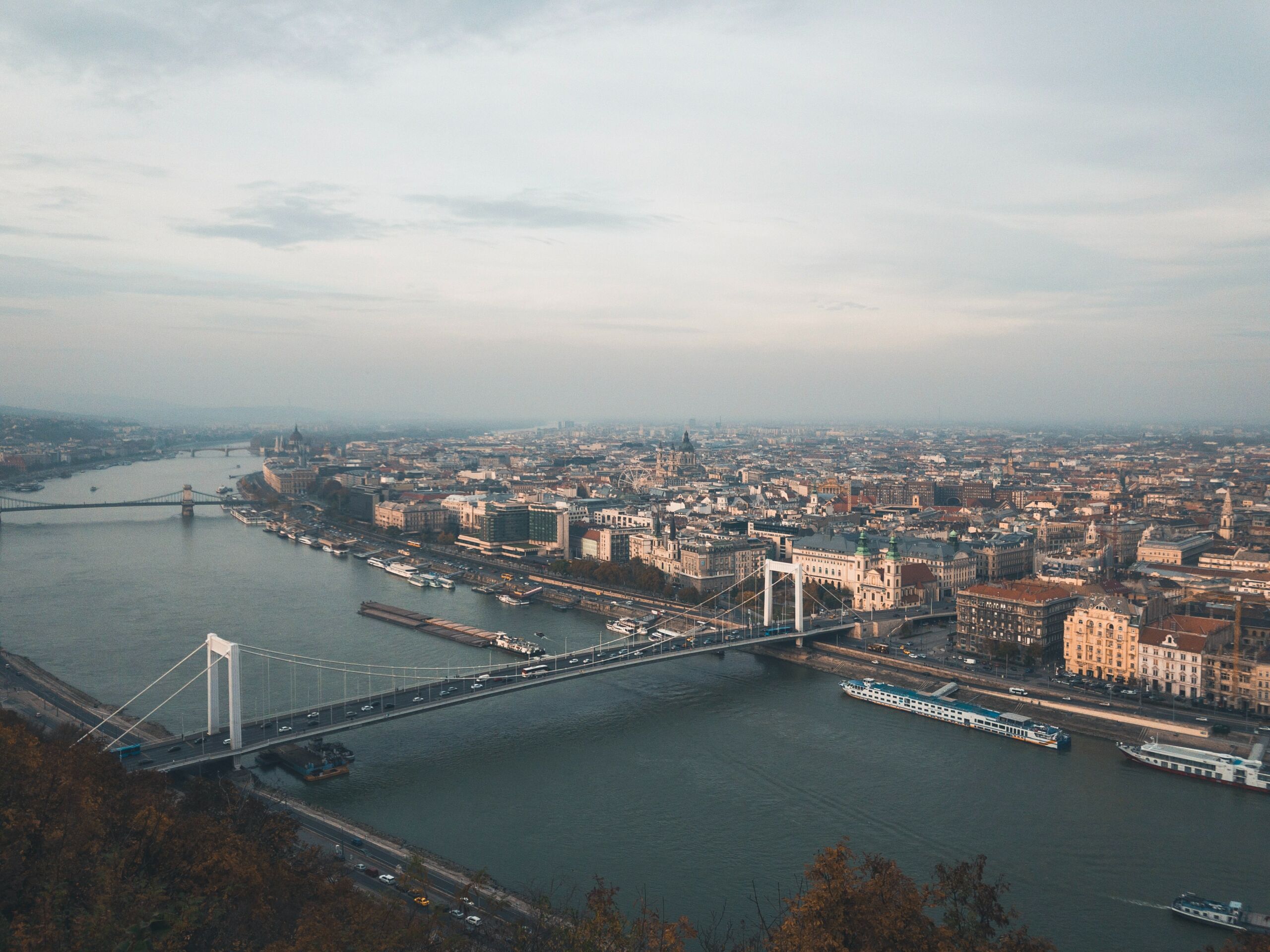
Fun fact
Elizabeth Bridge was originally planned as a cable bridge, but since the Hungarian industry was not able to produce quality cable, they altered the structure to become a suspension bridge. Ironically, it was the alteration that made it special: at that time, it was the world’s longest span suspension bridge without any pillars in its bed.
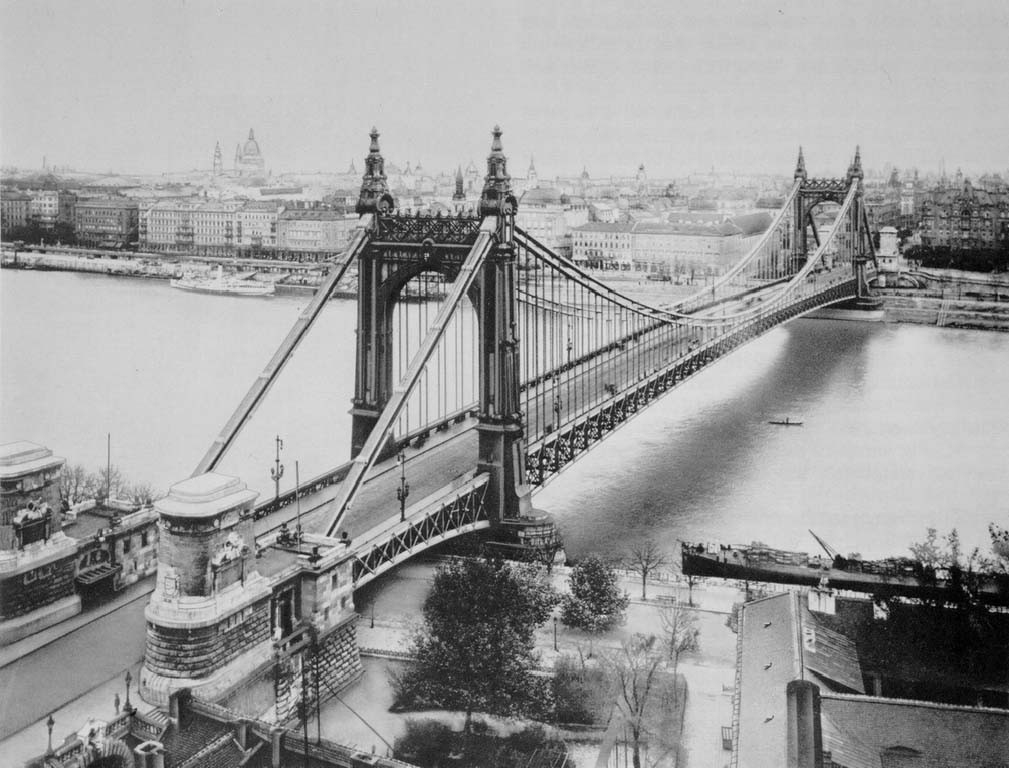
5. Petőfi Bridge – one of the famous bridges of Budapest
Built to be simple and practical during the global economic crisis, Petőfi Bridge is the least spectacular of the Budapest bridges. In 1937, at the time of its opening, the southern Buda side of the city was practically empty. It was pretty much thanks to the newly built crossing that the territory soon became a vibrant residential area. Originally named Horthy Miklós Bridge, it was also renamed after its post-World War II reconstruction: it got its new name from a well-known Hungarian poet, Sándor Petőfi.
Fun fact
Adding to the simplicity to its structure, today’s Petőfi Bridge is gray, but the original construction was blue to give it a more distinctive look.
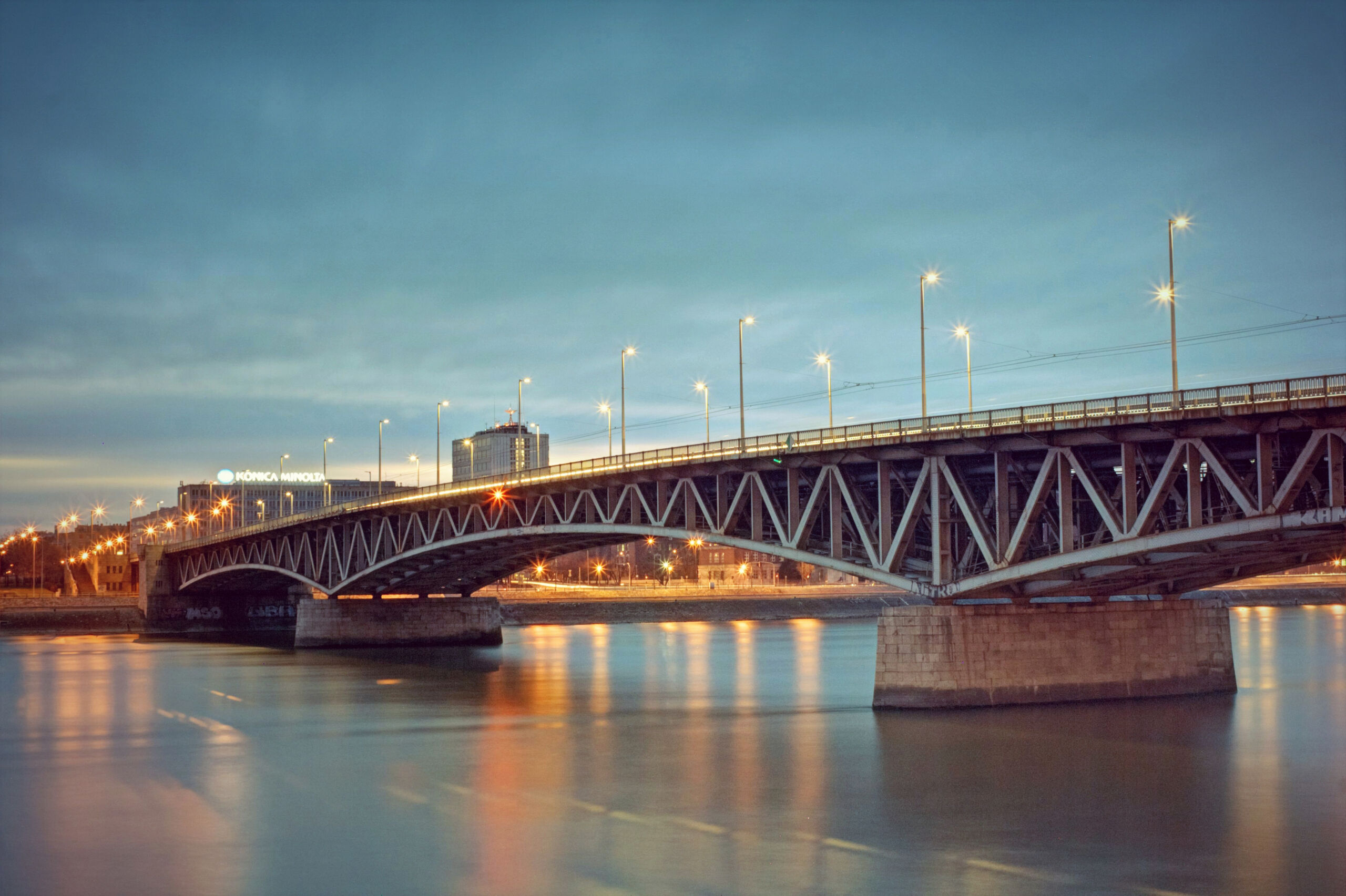
6. Árpád Bridge – beautiful bridge across the Danube
Arpad Bridge is, without doubt, the busiest bridge of Budapest today. Its construction started in the 1930s and probably thanks to its unfinished state, it was the only bridge in the city that was left unharmed during World War II. It was not until 1984 that it achieved its full size when the previously built narrow crossing got expanded and modernized to suit the heavy traffic. After bearing the name Sztálin Bridge for a short period of time during the communist regime, the bridge was renamed after Grand Prince Árpád, the forefather of Hungary.
Fun fact
Árpád Bridge is still inhabited by a bridge master who lives in the bridge, under the entrance to Margaret Island. He walks across the bridge twice a day and checks its condition.
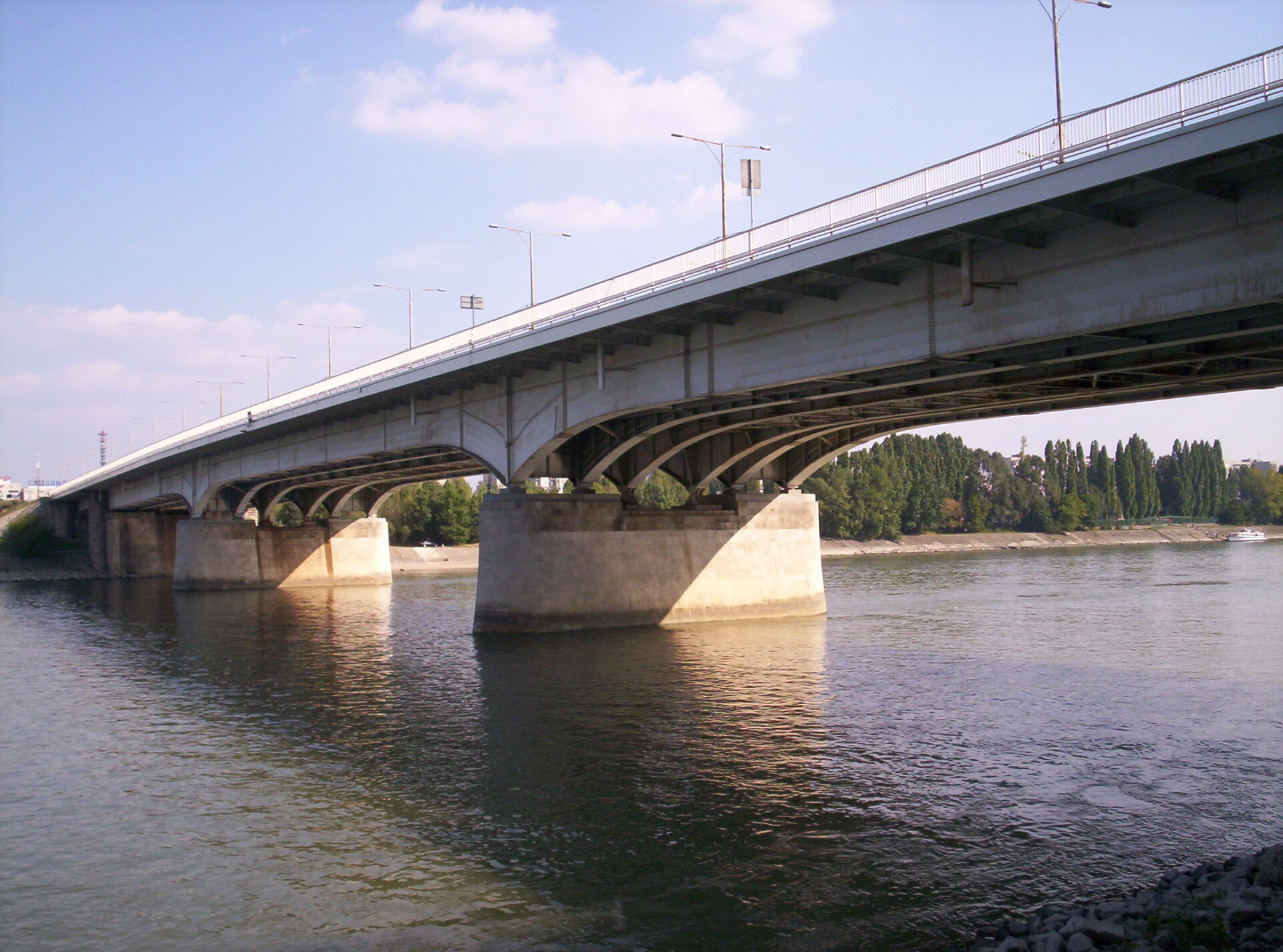
7. Rákóczi Bridge – one of the newest bridge in the capital of Hungary
Acting as the southernmost bridge of Budapest since 1995, Rákóczi Bridge is one of the newest additions to the crossings over the Danube in the capital. Although named after the noble Rákóczi family, you can still catch locals referring to it by its original name, Lágymányosi Bridge.
Fun fact
Although Rákóczi Bridge is situated at the southern banks of Budapest, it is surrounded by several prominent cultural venues, like the Hungarian National Theatre, the Palace of Arts (MÜPA), and the city’s biggest open-air concert hall, the Budapest Park.
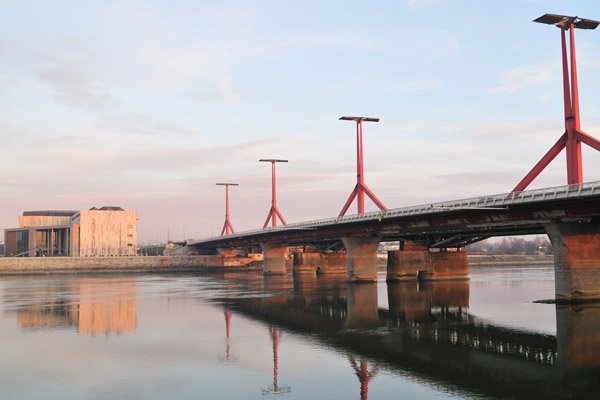
8. Megyeri Bridge in Budapest
The newest and longest bridge in Hungary, Megyeri Bridge was opened in 2008. Situated at the northern edge of the city, this bridge was created to be a symbol of modernization – partly because of its looks, and partly because it was built to relieve the city from transit traffic.
Fun fact
Not only is it the longest crossing over the Danube in Budapest, but Megyeri Bridge is also the second-longest bridge of Hungary – after the impressive Kőröshegy Viaduct that runs near the Lake Balaton.
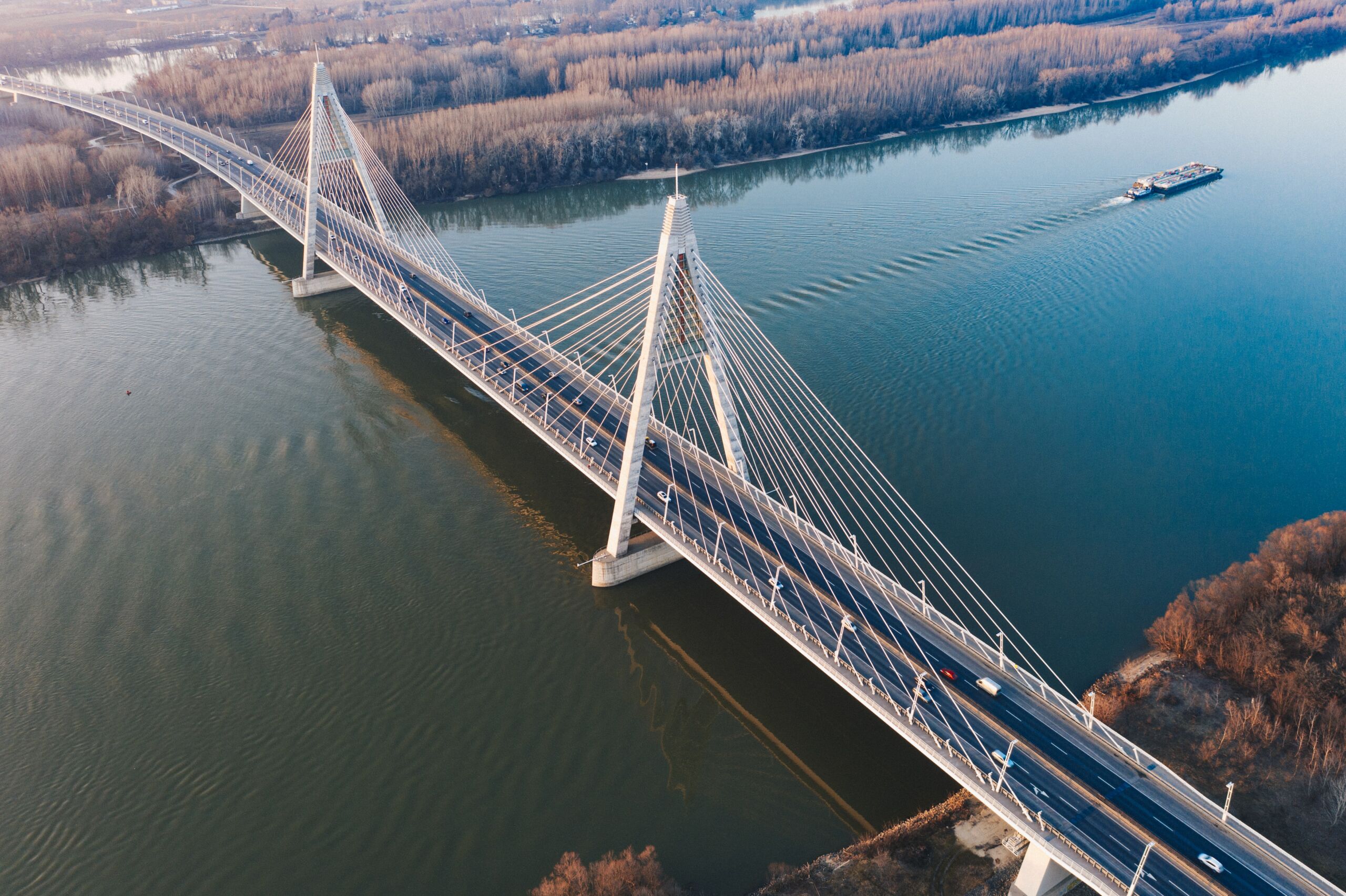
Fascinated by the bridges in Budapest?
We don’t blame you. Why don’t you go on a river cruise and adore the city’s magnificent crossings and beautiful panorama while rocking gently on waves of the Danube? Food and drinks included!
Q & A
- How many bridges are there in Budapest, Hungary?
- There are altogether 10 bridges in Budapest: 8 vehicular and 2 railway bridges.
- What are the bridges of Budapest?
- From North to South, the 8 vehicular bridges of Budapest are Megyeri Bridge, Árpád Bridge, Margaret Bridge, Széchenyi Chain Bridge, Elizabeth Bridge, Liberty Bridge, Petőfi Bridge, and Rákóczi Bridge. In addition to these, there are 2 railway bridges crossing over the Danube in Budapest.
- Which is the most famous bridge in Budapest?
- Historically, the most famous and oldest bridge in Budapest is the Széchenyi Chain Bridge (Lánchíd).
- Which is the oldest bridge in Budapest?
- Opened in 1849 as the first permanent bridge across the Danube in Hungary, the Széchenyi Chain Bridge (Lánchíd) is the oldest bridge in Budapest.
Where is Budapest? What pleasures does this amazing city offer to the tourists? If you are interested, you should read our article on the topic. As everyone knows, who once visited Budapest, this is the city, which you will never forget in your life!
Chain Bridge Budapest – the amazing construction that you have to visit if you are in the city!








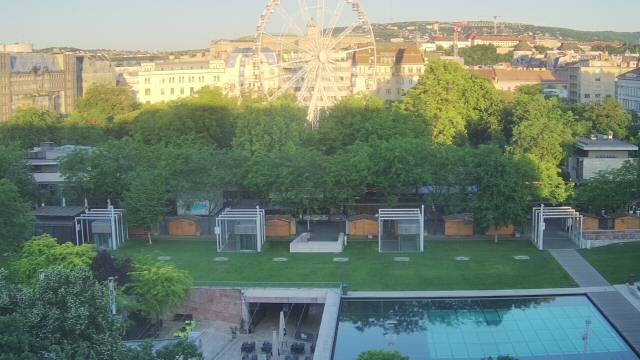
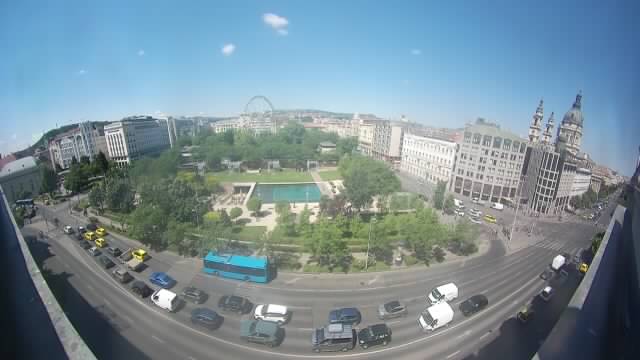
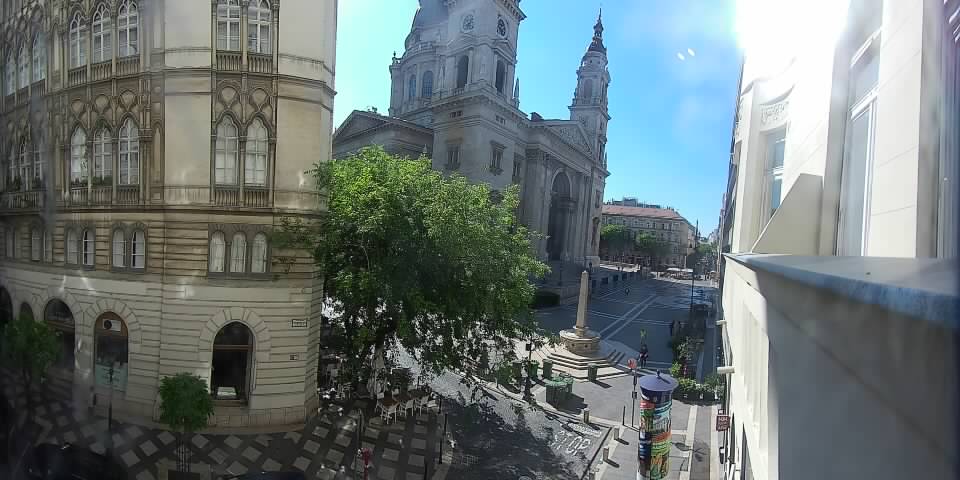

Your experience is important.
Anything you have not found?
Ask a Question
Please log in to write a review.
There is no review yet.